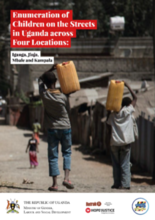Displaying 41 - 50 of 226
This chapter from the book Resilience and the Re-integration of Street Children and Youth in Sub-Saharan Africa is comprised of two studies. The first study provides an analysis of the psychological situation of street children and youth in Yaoundé and Douala, while the second one deals with resilience building within a rehabilitation home.
The purpose of this study is to point out the experience of sexual and physical exploitation and its determinant factors among street children in Addis Ababa, the capital city of Ethiopia.
The current longitudinal study examined the prevalence, overlap, and impact of adverse childhood experiences (ACEs) in a sample of Brazilian children and adolescents who use city streets as spaces for socialization and survival (i.e., street-involved youth).
This qualitative study explored life experiences of children living on the streets in Eldoret, Kenya.
This study sought to determine the risk and prevalence of drug abuse among street children focusing on those in the car parks in the Gambia.
This paper is based on literature review on the legal, political and social context of Malaysia regarding child welfare and social work.
The goal of this research project is to inform policy and practice in Uganda by providing an estimate of the number of children on the streets in Kampala, Jinja, Iganga and Mbale; insight into the characteristics of these children; and exploration of children’s perspectives of their engagement on the streets.
For this study, forty men and women from five semi-rural villages in Meru County, Kenya participated in a Rapid Rural Appraisal to explore main and underlying reasons why children may be, or may feel, unwelcome in the home and thus migrate to the street.
This article explores main and underlying reasons for why children may be or may feel unwelcome in the home and thus migrate to the street.
This study asked three primary questions: 1) What is the nature of crisis children encounter on the street? 2) What are the ranges of informal caregiving practices? 3) What social network characteristics facilitate or complicate caregiving?


